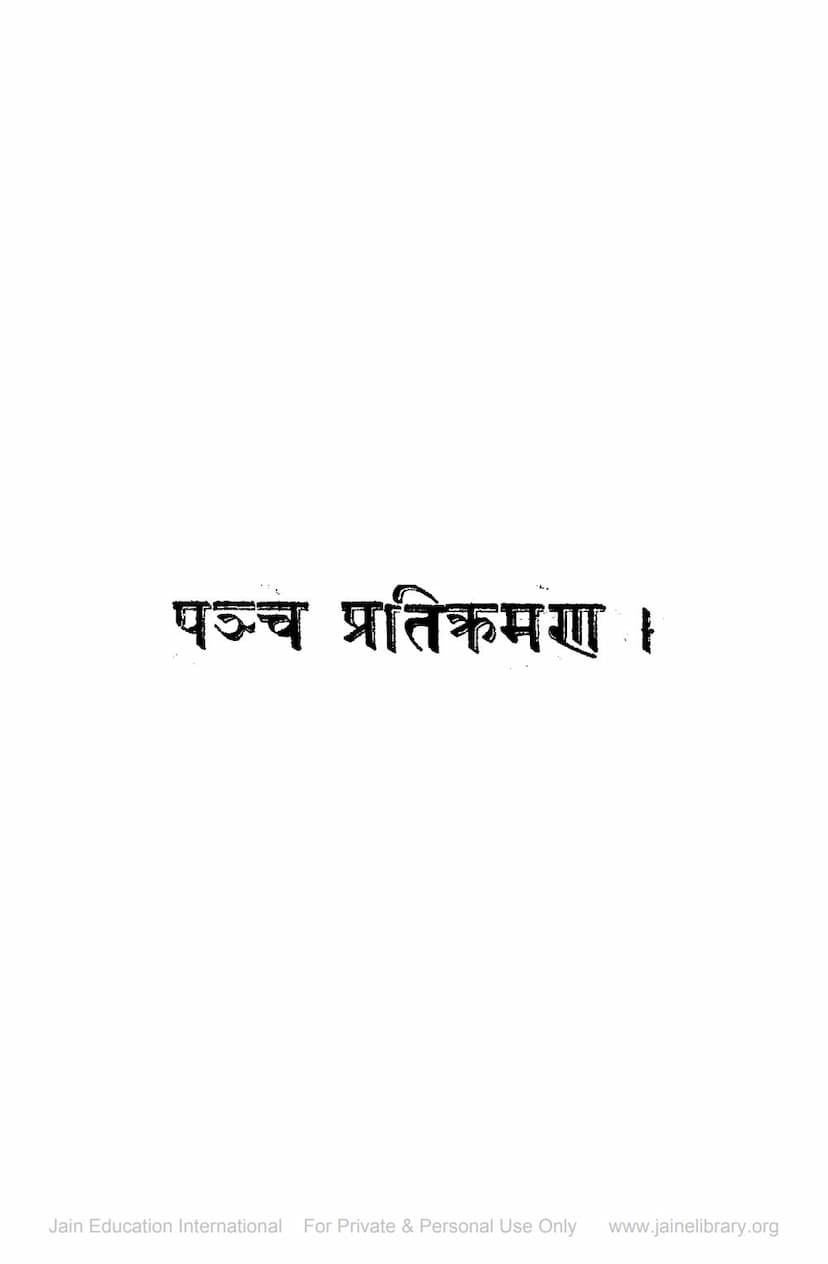Panch Pratikraman
Added to library: September 2, 2025

Summary
The book "Panch Pratikraman" by Pt. Sukhlal Sanghavi, published by Shri Atmanand Jain Pustak Pracharak Mandal, Agra, in Vikram Samvat 2448 (1925 CE), is a comprehensive guide to Jain religious practices, specifically focusing on the ritual of Pratikraman.
Key Aspects and Content:
-
Dedication: The book is dedicated to Babu Dalchandji Singhi of Azimganj, described as a renowned and wealthy businessman in Calcutta. The author highlights Singhi's exceptional qualities of intellectual liberalism (willingness to listen to all viewpoints and respect them) and religious devotion, which he sees as rare and auspicious. Singhi's generosity funded the publication of this book, making it accessible to all readers.
-
Purpose of Pratikraman: The author draws a parallel between Pratikraman in Jainism and Sandhya in Vedic society, emphasizing its significant importance. He notes that while many Jains in India speak and understand Hindi, a comprehensive Pratikraman with Hindi explanations had been lacking, hence the initiative by the Mandal.
-
Structure and Content: The book is structured as a detailed explanation and translation of various Jain Pratikraman formulas and prayers. The table of contents (विषयानुक्रमणिका) on page 33 onwards reveals a vast array of subjects covered, including:
- Various Sutras (prayers and chants) like Namaskar, Panchindriya, Khama Saman, Irvavahiyam, Logassa, Samayik, and others.
- Explanations of core Jain concepts such as the nature of Pratikraman, Panch Parmeshthi (the five supreme beings), the soul (Jiva), and Pratikraman procedures for daily, nightly, fortnightly, monthly, and yearly observances.
- Detailed explanations of the six Avashyakas (essential duties) in Jainism: Samayik, Chaturvinshtistav, Vandan, Pratikraman, Kayotsarg, and Pratyakhyan.
- Discussions on the spirituality of Avashyakas, their sequence, and their importance.
- Comparative analysis of Jain Avashyakas with similar practices in Buddhism, Vedic traditions, and Parsiism.
- Elaborations on specific prayers and hymns like Uvsaggaharam Stotra, Jay Veetray, Arihant Cheiyanam, Kallanakand Stuti, Sansar Davanal Stuti, etc.
- Detailed guidance on various rituals and observances, including Vandana, Chaitra Vandana, Pausadh Vrat, Pachakhyan, and the methods for performing them.
- A significant portion of the book is dedicated to the detailed explanation of Pratikraman formulas, verse by verse, with their Anvayarth (word-by-word meaning) and Bhavarth (overall meaning).
- The "Perishisht" (Appendix) section includes various stanzas, prayers, and elucidations on specific Jain practices and deities, such as Sakala Tirth Namaskar, Brahma-Vidya, Shrut Devata Stuti, Kshetra Devata Stuti, Bhuvan Devata Stuti, Brihat Shanti, Laghu Shanti, and stotras dedicated to various Tirthankaras, especially Parshvanath and Shantinath.
-
Authorship and Publishers: Pt. Sukhlal Sanghavi is credited with the Hindi translation and commentary. The publisher is Shri Atmanand Jain Pustak Pracharak Mandal, Roshan Mohalla, Agra. The book's first edition was published in Veer Samvat 2448 (1925 CE).
-
Focus on Practicality: The book aims to provide a practical and accessible guide for Jains, particularly those in Hindi-speaking regions, to understand and perform Pratikraman. The detailed explanations of each verse and ritual aim to remove any prior deficiencies in this regard.
-
Historical Context: The author references ancient Jain texts and commentaries like Churṇi, Avashyak Vrutti by Acharya Haribhadra Suri, and Niryukti by Shribhadra Bahu Swami to establish the antiquity and authenticity of the practices described. He also notes differences in practices between various Jain sects like Murtipujak and Sthanakvasi, and the influence of historical changes on liturgical texts.
In essence, "Panch Pratikraman" is a foundational text for understanding and practicing a key Jain ritual, meticulously explained and presented in Hindi to cater to a wider audience, made possible by the generosity of its patron.